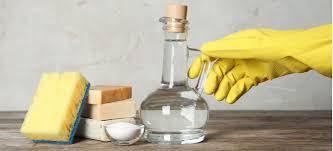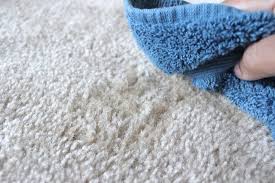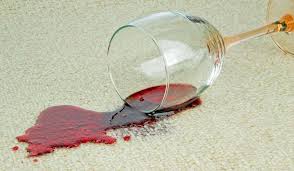Does vinegar kill Household germs in carpet?
In the ongoing battle between you and household germs, you may think germs have the advantage. Unlike you, they can be just about everywhere at once. And when it comes down to hand-to-hand combat, you may be too rushed or tired or just have better things to do. They don’t.
Yet keeping household germs at bay helps keep colds, flu, and other infectious illnesses from spreading. This on-the-go cleaning guide can help you get the upper hand with germs by focusing your efforts on the places where they lurk the most.
Where the Germs Are
As a rule of thumb, any area of your home with high traffic and surfaces that get touched a lot is a germ bank. Not all germs are harmful. But where there are germ strongholds, the conditions are favorable for disease-causing viruses or bacteria to lurk.
One study found the kitchen sink had more bacteria than the toilet or garbage can. The only bathroom hot spot in the study’s top 10 was the toothbrush holder. Why? Toothbrush holders are often near the toilet, and flushing sends a fine spray of mist onto them. Plus, it’s easy to forget about them if you’re focused on cleaning the toilet and more obvious germ hot spots.
Getting Started: What You Need to Kill Germs
Cleaning with soap and hot water removes dirt and grime and gets rid of some germs. It’s usually enough for many surfaces. But you may want to disinfect areas that are home to a lot of germs.
- A cleaner-disinfectant can be good for speed-cleaning because it combines the two steps. You can use it for most kitchen countertops and bathroom surfaces.
- Clean areas with sticky spills and dirt with soap and water. Then disinfect. To make a cheap, effective disinfectant, mix up to 3 teaspoons of bleach in 1 gallon of water. Never pair bleach with ammonia or vinegar.
- Apply it and leave on for 3 to 5 minutes. Rinse and let air-dry to save time. Or dry with a clean towel.
- Always wear gloves and open some windows when you use products with bleach.
If you’re using store-bought disinfectants, try not to breathe in the chemicals. Also remember to wipe down areas afterward with water or let cleaned areas, such as countertops, fully dry before you prepare food on them.
White vinegar or hydrogen peroxide are effective homemade cleaners. But never mix hydrogen peroxide and vinegar. And if you use hydrogen peroxide, test it first on an unseen surface to make sure it doesn’t discolor or fade it.

Can Vinegar Sanitize While Cleaning?
Vinegar is also good for killing bacteria. However, it is not listed as a disinfectant due to the fact that it only kills about 90% of bacteria and not the required 99.9% of qualified disinfectants.
To use it as a disinfectant you would use straight vinegar. Diluting it with water makes it less effective. Also when you mix it with baking soda then it loses its ability to disinfect.
If you add baking soda while carpet cleaning then you will need to blot the area with clean water after and then re-apply only vinegar for disinfecting.
While it is not a great overall disinfectant, it still has the ability to clean and destroy most bacteria, including mold. This gives your carpet cleaning routine an added boost, especially when you are dealing with food or fluid messes that can contain bacteria.

How does it work?
Vinegar, be it white or malt or rosemary-infused, is about 5 per cent acetic acid. The acid kills bacteria and viruses, by chemically changing the proteins and fats that make up these nasties and destroying their cell structures.
When US researchers tested commercial cleaning products against alternatives like vinegar and bicarbonate of soda, they discovered that neat vinegar killed a range of household pathogens.
Science also tells us, for example, that vinegar will kill off the flu virus.
As part of research aimed at preparing us for a flu pandemic, UK researchers found that malt vinegar, much like bleach and washing up liquid, can rapidly inactivate the flu virus.
More recently, US researchers from the Albert Einstein College of Medicine found that vinegar efficiently killed Mycobacterium tuberculosis — the bacteria that causes tuberculosis — after 30 mins of exposure to a six per cent acetic solution.
Professor Peter Collignon, an infectious diseases physician at the Australian National University’s medical school, says: “TB is a hard-to-kill bacteria, so the fact that it works against them means most other bacteria will likely be killed by vinegar as well.”
Indeed, it could even be an effective and economical solution to laboratories and hospital settings in resource-poor countries.

Is Vinegar Safe for all Surfaces?
While it is safe for a lot of your surfaces, vinegar can be very harmful to certain surfaces.
It can damage almost all stone surfaces including:
- Marble
- Granite
- Limestone
- Travertine
Even a small amount in short contact can begin to etch away at these calcium-based surfaces. Instead use a safer carpet cleaner such as dawn dish detergent to scrub these surfaces.
You will also want to avoid using straight vinegar on any wax sealed surfaces such as sealed wood furniture. Instead opt to use a diluted 50/50 vinegar and water solution to clean any stubborn grime from these surfaces so that the vinegar won’t strip the wax.
When it comes to cleaning these surfaces you will want to avoid any cleaners that have highly acidic properties, such as vinegar.
How to disinfect carpet with vinegar using a steam cleaner?
- Step 1: Make a mixture of vinegar and water. If there are no specific ratios given for the machine, you can try using one part vinegar to one part water. For severe cases, try getting the full strength vinegar. If soap-to-water ratios are given, replace the portion of soap with vinegar.
- Step 2: Carefully fill the detergent compartment with the solution. Make sure to not overfill it as it might cause damage to the carpet.
- Step 3: Run the steam cleaner all over the carpets with the directions for the machine.
- Step 4: Make sure that the carpet is completely dry before using. The vinegar’s smell will go away once the carpet dries.